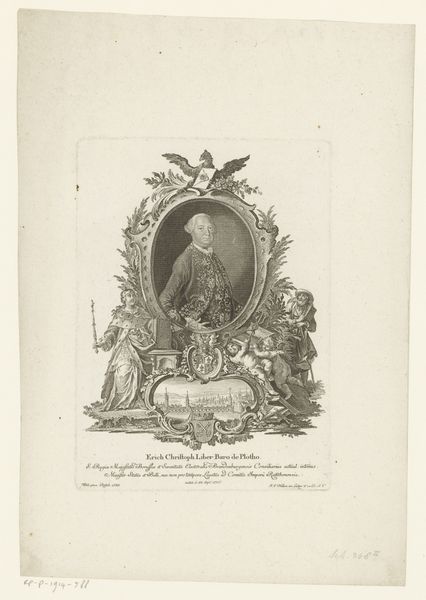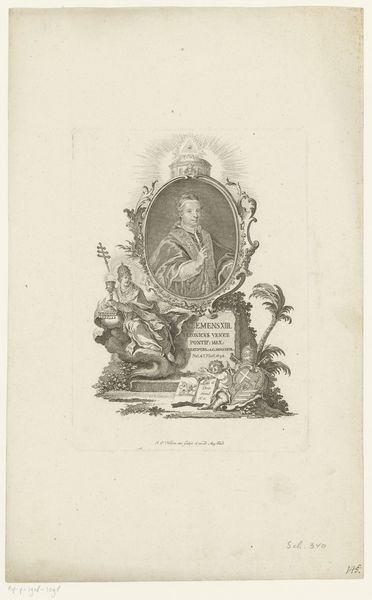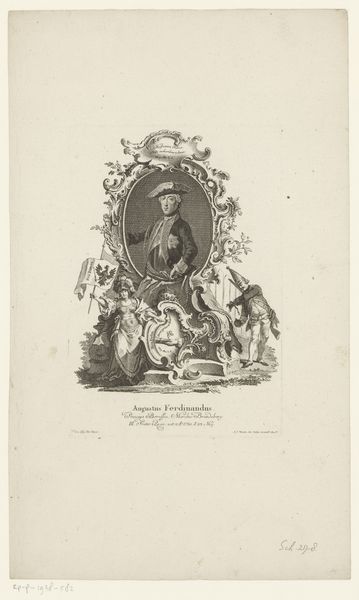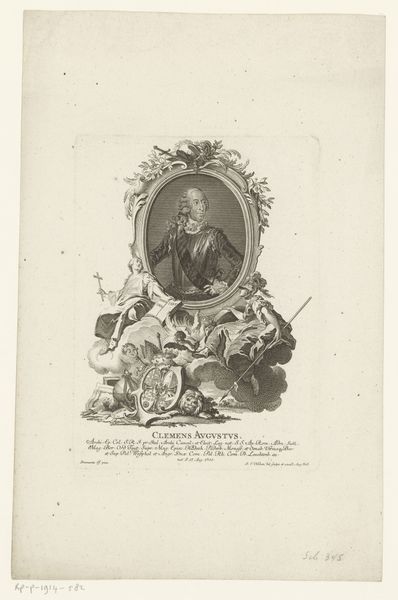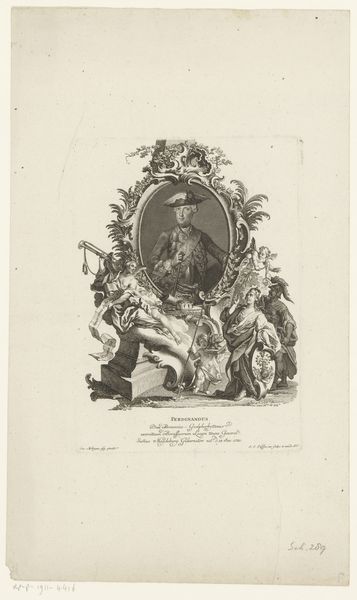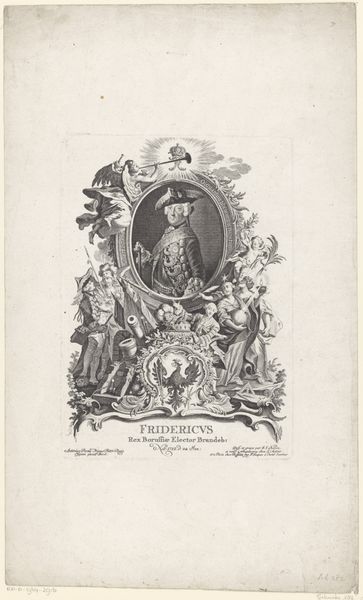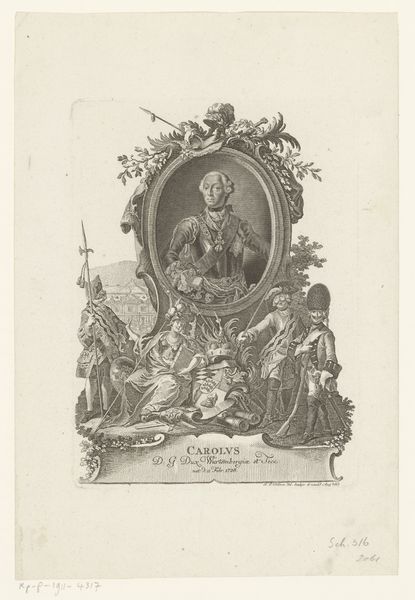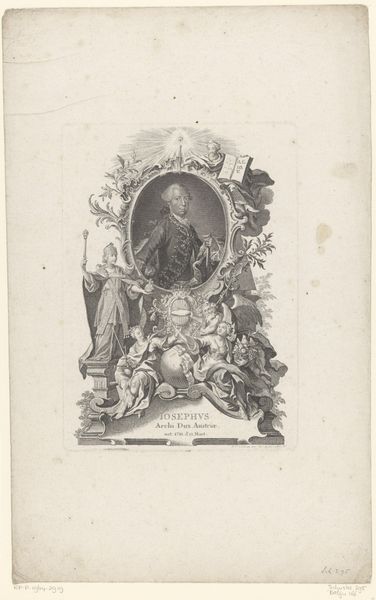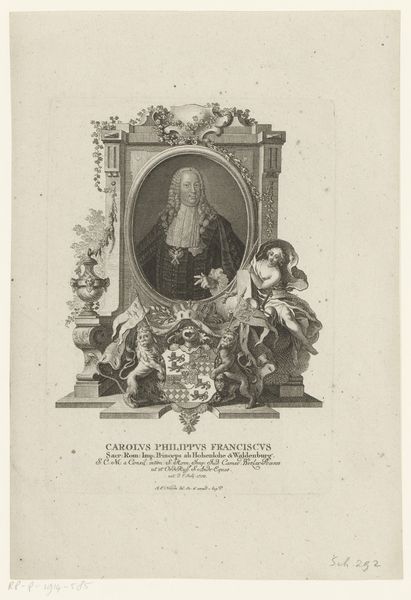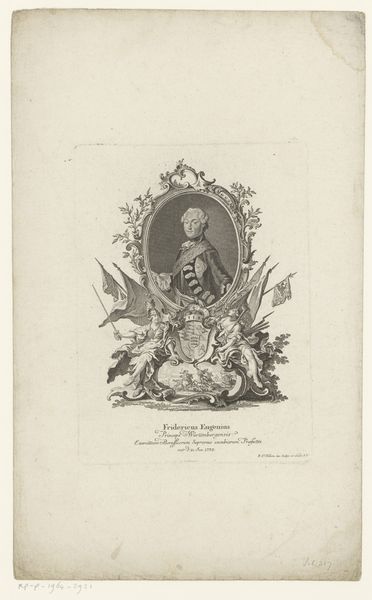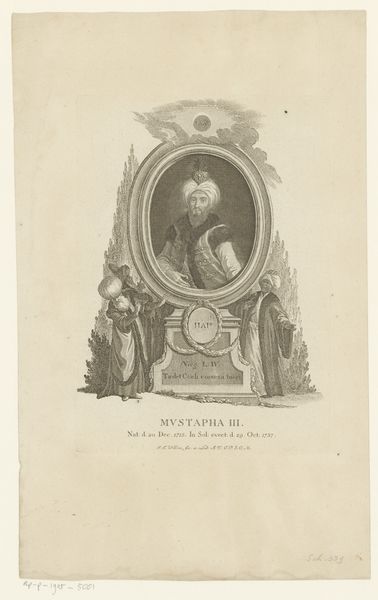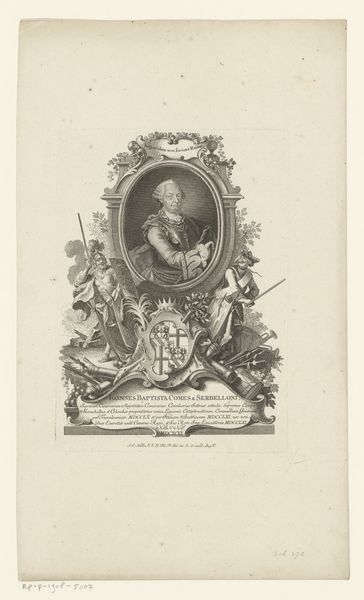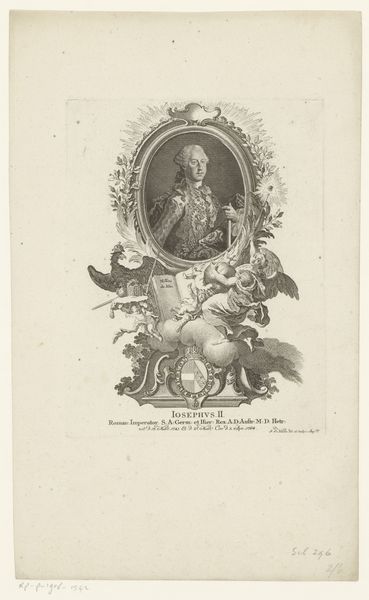
print, engraving
#
portrait
#
baroque
# print
#
old engraving style
#
history-painting
#
engraving
Dimensions: height 220 mm, width 155 mm
Copyright: Rijks Museum: Open Domain
Curator: What a compelling glimpse into Prussian aristocracy. This is Johann Esaias Nilson’s “Portret van August Willem van Pruisen,” an engraving dating sometime between 1731 and 1788, now residing here at the Rijksmuseum. Editor: It strikes me as remarkably staged, almost theatrical. The way the figures are arranged feels less about individual representation and more about projecting an image of dynastic power. The elaborate ornamentation makes me feel like I am watching a play. Curator: Exactly! The ornate cartouche surrounding the portrait itself acts as a frame within a frame, further emphasizing the constructed nature of the image. Flags, floral arrangements—symbols meant to legitimize and amplify authority. Look closer, there’s a solar symbol around his arm, highlighting a kind of divinely ordained status. Editor: That symbolism is interesting considering August Wilhelm’s complex legacy. He wasn’t exactly a celebrated figure, his military capabilities were often questioned, particularly in comparison to his brother, Frederick the Great. This image seems to perform a specific kind of myth-making, glossing over the complexities of his persona. Is he hiding behind a fabrication? Curator: That is something to consider, certainly. However, don't miss the way Nilson is actively recalling artistic precedent. I notice elements in the framing, as well as some of the staging, as almost borrowed, like a pastiche from works of older masters from prior eras. Editor: I agree; however, his is image management, visual propaganda meant to buttress a certain ideal of Prussian power through cultural production and visual iconography. I can’t help but see these images as participating in systems of power that actively marginalized others. Who benefits from this idealization, and at whose expense? Curator: Yes, the layers of meaning embedded in this seemingly simple portrait offer much to contemplate. It reminds us that images are rarely neutral, and it can be fascinating to pick apart some of the complex cultural influences that are often at play in portraiture from this period. Editor: Indeed. It’s a potent reminder that even images rooted in the past have the power to spark essential dialogues about representation, power, and their enduring consequences.
Comments
No comments
Be the first to comment and join the conversation on the ultimate creative platform.
